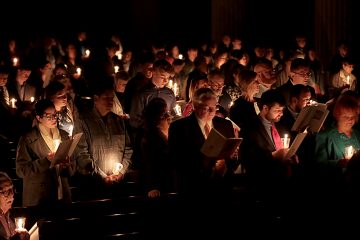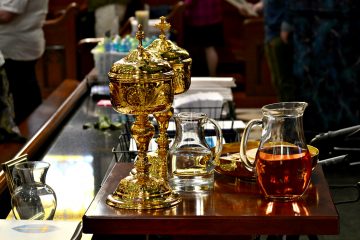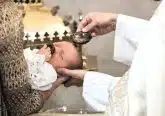When does Christmas actually end?
Washington, D.C. Newsroom, Jan 5, 2022 / 17:00 pm
How many days is Christmas? When should you finally take those lights off the porch, or remove the tree? Read on for some of the arguments for and against commonly agreed-upon end dates for Christmas.
Christmas is one day
This, of course, is the simplest answer. Christmas is typically celebrated on Dec. 25 for most of the world, and on Jan. 7 for Churches using the Julian calendar, and on Jan. 6 for yet another, considerably smaller, part of the world. On this day, the liturgy celebrated is the Feast of the Nativity of Our Lord. Priests wear white vestments on Christmas, which is different from the violet they wear during Advent.
Christmas is eight days
There’s also an argument to be made that Christmas is eight days long. The Church regards Christmas as an octave, or eight-day celebration. The octave of Christmas begins on the Feast of the Nativity of Our Lord and concludes on the Solemnity of Mary, Mother of God on Jan. 1.
During the eight days of Christmas, clergy wear white, except during St. Stephen’s Day and the Feast of the Holy Innocents, when they wear red.
Christmas is 12 days
We’ve all heard the Christmas carol “Twelve Days of Christmas.” While it’s unclear as to why someone would give someone 23 separate birds, a pear tree, and the services of 50 people over a 12-day period, there actually is a liturgical precedent for claiming that Christmas is 12 days long.
Twelve days after Christmas is the Feast of the Epiphany. This day marks when the Magi encountered Jesus, Mary, and Joseph, and gave Jesus the gifts of gold, frankincense, and myrrh.
In the Latin Rite of the Catholic Church, Epiphany celebrates the revelation that Jesus was the Son of God. It focuses primarily on this revelation to the Three Wise Men, but also in his baptism in the Jordan River and at the wedding at Cana.
In the Eastern rites of the Catholic Church, Theophany — as Epiphany is known in the East — commemorates the manifestation of Jesus’ divinity at his Baptism in the River Jordan.
But here’s where it gets a little confusing. Because Christmas 2023 fell on a Monday, Epiphany was observed on Jan. 7, which is 14 days after Christmas Day.
During the 12 days of Christmas, clergy wear white, except during St. Stephen’s Day and the Feast of the Holy Innocents, when they wear red.
Christmas ends Jan. 13
In the usus antiquior of the Roman rite, per the general rubrics of the Roman Breviary, “Christmastide” includes both “the season of Christmas” (the 12 days seen earlier) and “the season of Epiphany,” which is the eight days from the Epiphany on Jan. 6 to the commemoration of the Baptism of the Lord on Jan. 13.
What is now called the season of Epiphany was, until 1955, observed as the Octave of the Epiphany.
Christmas ends on Candlemas
Now we’re talking.
Candlemas, or the Feast of the Presentation of the Lord, is on Friday, Feb. 2. On this day, many Catholics bring candles to the church to be blessed. They can then light these candles at home during prayer or difficult times as a symbol of Jesus Christ, the Light of the World.
Candlemas is the last day that the Alma Redemptoris Mater is the Marian antiphon appended to hours of the Divine Office. The Alma Redemptoris Mater is used from the beginning of Advent through Feb. 2, and so Candlemas has come to be associated with the close of the Christmas season.
Candlemas is still observed with public, Christmas-esque celebrations throughout the world, including in Peru, Puerto Rico, France, and Belgium.
On the other hand, Septuagesima Sunday — which is definitely not part of Christmas — has been known to fall before Feb. 2, giving the lie to the Christmas-is-until-Candlemas party.
What do the U.S. bishops say?
According to the United States Conference of Catholic Bishops, the liturgical season of Christmas ends with the celebration of the Baptism of the Lord.
The Baptism of Christ, which the USCCB states is the end of Christmas, is observed on Monday, January 8,
After the Baptism of Christ, clergy are to wear the green vestments of Ordinary Time.
So when does Christmas end?
The exact right time to observe the end of the Christmas season? That is largely a personal call, based on your own traditions, customs, and other factors. For safety reasons, CNA recommends that you take your tree down as soon as it starts shedding a ton of pine needles, but other than that, there’s an argument for leaving things up as late as Feb. 2. Of course, your neighbors may disagree, but that’s a “them” problem, not a “you” problem.
Merry Christmas!













